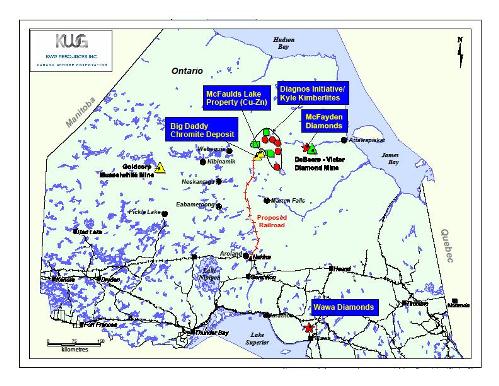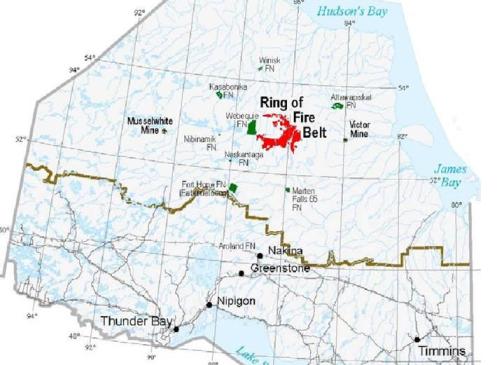Ontario Nature is a charitable organization representing more than 30,000 members and supporters and 140 member groups across Ontario. Their goal is to protect wild species and wild spaces through conservation, education and public engagement. This article is from their magazine On Nature. A more thorough explanation of Ontario Nature’s mission and goals is listed at the end of this posting.
Peter Gorrie is a Toronto-based freelance writer specializing in environmental and energy issues, and the environment columnist for The Toronto Star.
For an extensive list of articles on this mineral discovery, please go to: Ontario’s Ring of Fire Mineral Discovery
The Ring of Fire – by Peter Gorrie
Buried treasure – copper, nickel, diamonds, chromite – lies beneath northern Ontario’s vast boreal landscape, prompting a frenzy of unchecked mining activity despite the provincial government’s two-year-old promise to safeguard half the boreal region and promote sustainable development in the other half. Will the Ring of Fire become Ontario’s tar sands?
Standing beside the metal-clad head frame of a former gold mine in the middle of the broad northern Ontario landscape near Aroland First Nation, Andrew Megan Sr. tells me a story that, he says, took place some 70 years earlier.
His father and uncle, working their trapline, found a rock flecked with gold. The men showed the rock to a non-native prospector and, when asked, showed him where they had come upon it. In return, he gave each a pouch of tobacco.
Months passed – how many is unclear – but one day as Megan, his father, uncle and relatives sat in their bush camp, they heard a mechanical roar. They scattered as a bulldozer crashed through the trees and brush. The next year, work began on a mine that continued, off and on, until 1984. Prospectors had been exploring and staking the area for more than a decade, but the rock found by Megan’s father and uncle pinpointed a potentially rich vein of gold that spurred development of the site. Over the next four decades, a series of companies, including Osulake Mines and Consolidated Louanna, attempted to determine the extent and value of the ore body and start operations, but the mine didn’t produce any gold for sale until near the end of its life.
Megan, now 72 and a respected elder, recounts the story to make a point he considers crucial.
Read more
























